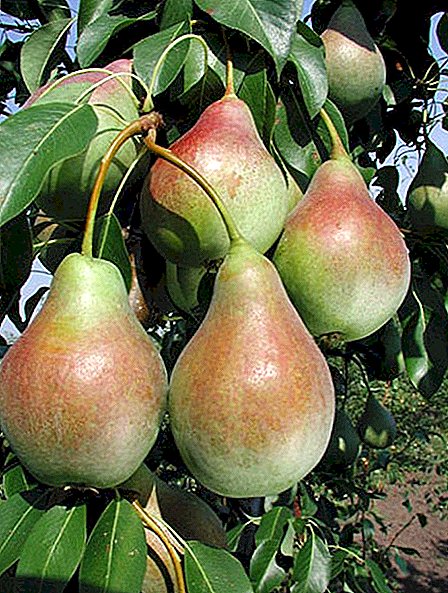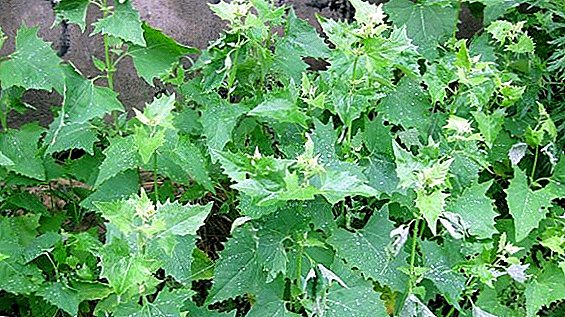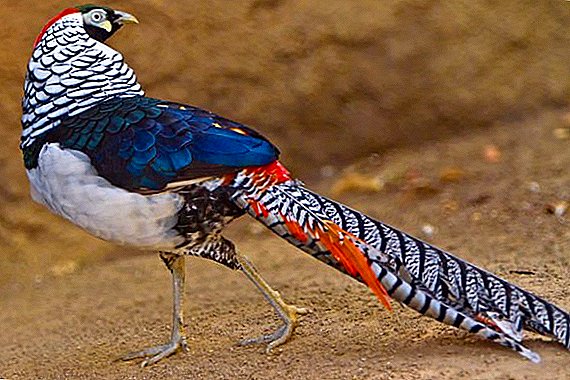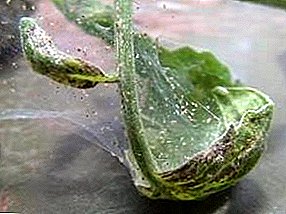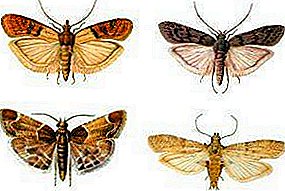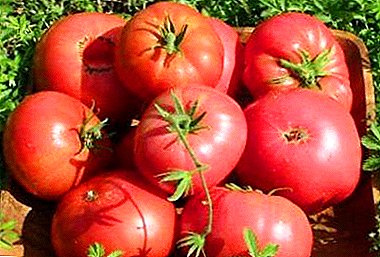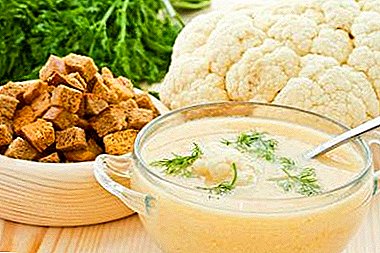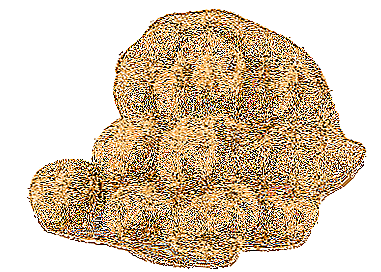
Potatoes are a common tuberous family culture. With proper cultivation will give a good harvest and replenish the bins for the whole winter.
Unlike many other cultures, potatoes make little sense to feed during the growing season - because at this time, valuable substances will no longer be sufficiently absorbed. The main thing - is to choose the right fertilizer for the root when planting.
However, you can not constantly use the enriched land, without the completion of important micronutrients. Year after year, cultivating his plot, the land is depleted and the summer resident has to maintain yield by applying fertilizer.
Why do you need to fertilize potatoes?
Summer residents, who prefer to do without additional growth stimulation, can boast only 3 buckets of potatoes from one planted one, while those who use fertilizers receive a yield of one to eight. Potatoes belong to the nightshade and loves nutritious soil and feeding.
Review of products with step-by-step instructions for use
Potatoes are fertilized with organic and mineral additives. The plant gives preference to organic matter: bird droppings, manure, and also siderats.
Siderats have become common - plant species that contain a lot of micronutrients that are so necessary for the growth of potatoes. Representatives of such live feedings are: stable, nettle, peas and legumes, rye, oats.
Organic matter
Organic includes all the most useful for growth and education tubers. The plant easily assimilates them, and the soil becomes more fertile due to the formation of humus. When organic fertilizers are decomposed inside the soil, carbon dioxide is released, which is necessary for plant opulence and an increase in tuberous ovaries. Consider what organic fertilizers are.
Wood ash
 Ash is a unique remedy. You can add it directly to the wells, as well as scatter on the site after harvest in the fall. Potatoes prefer to grow in soil with a pH of no higher than 6.0, and ash contributes to soil deoxidation and normalizes the soil pH.
Ash is a unique remedy. You can add it directly to the wells, as well as scatter on the site after harvest in the fall. Potatoes prefer to grow in soil with a pH of no higher than 6.0, and ash contributes to soil deoxidation and normalizes the soil pH.
- In autumn, 120-150 grams of ash should be poured into one square meter in the soil with a predominance of clay, and then sprinkled with earth. In the ground, where there is more sand or in the peat area, it is better to scatter the ash in the spring in the same quantity.
- You can add 1-1.5 kg of ash directly into the bag of seed potatoes.
- Ashes are put into the landing well at the rate of 1-1.5 boxes of matches for one hole and mixed with the ground.
- When earthing up rows, you can add one box of wood ash under each bush.
Chicken droppings
One of the best ways of feeding is chicken manure.. Land fertilized with droppings gives the plant strength to grow, bloom, form ovaries.
Avian manure is a very concentrated fertilizer and in case of busting it can burn or damage the plant. But if you use the mind, it will help grow a big crop. It is absorbed easily and enriches the soil for the future.
Terms of use of bird droppings:
- Mix the manure with the organic substrate. This may be finely chopped straw just peat.
- Professional gardeners make such dressing in the ground even in the autumn, but it is possible 1.5 months before disembarking.
- Introduced litter triggers a lively process of excreting nitrogen. If you add too much, the plants will be too high, but not productive.
Chicken manure contains a huge amount of phosphate rock, potassium, nitrogen and calcium, so it is important to observe the dosage.
Sheet top dressing
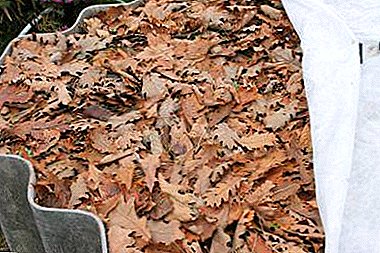 Stimulate and feed your crop through the leaves. Scientists have shown that the leaves of the plant produces a much larger number of useful elements than the roots. With this treatment, the foliage absorbs magnesium very well, as well as nitrogen and sulfur.
Stimulate and feed your crop through the leaves. Scientists have shown that the leaves of the plant produces a much larger number of useful elements than the roots. With this treatment, the foliage absorbs magnesium very well, as well as nitrogen and sulfur.
It is recommended to make sheet spraying through the pulvellator in the morning and in the evening. With strong heat, the work will go down the drain, as the fertilizers will evaporate. Do not flood the foliage over and over. Follow directions for supplements. When leaf fertilizer must take into account the influence of a significant number of factors that can either increase its efficiency, or dramatically reduce its positive effect on increasing yields and product quality.
Organo-mineral (WMD)
The increased content of humic compounds makes feeding effective. This stimulator will improve the assimilation by potatoes of all the additives introduced, as well as the trace elements contained in the soil.
Giant
The main substances are not susceptible to washing out from the ground, which allows the plant to get all the essentials throughout its life cycle. The giant does not contain caustic elements and is completely environmentally friendly.
How to use to feed the land?
Before sowing potatoes, pellets scatter around the site at the rate of 120 grams per square meter and dig up the soil.
When the seed potatoes are already planted, you need to water it thoroughly so that the giant activates and starts feeding the plant nutrients. Autumn do likewise. Scatter granulated bait around the site and dig.
- For sowing. In the hole they fall asleep a little, about a box of matches, granules, mixed with earth and put potatoes.
- Diluting with water. About 60 grams of poured into a 12-liter bucket of water and insist a few hours, then soaked and watered already planted tubers.
Mineral
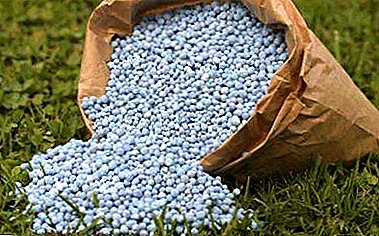 This type of fertilizer is a concentrated supplement that is applied either just before planting or in the process. When mineral supplements are added to the hole for planting, organic fertilizers are often mixed in or a little peat mixed with straw is added. Tuberiferous need not only feed, but also to protect against various diseases. Mineral concentrates solve both problems.
This type of fertilizer is a concentrated supplement that is applied either just before planting or in the process. When mineral supplements are added to the hole for planting, organic fertilizers are often mixed in or a little peat mixed with straw is added. Tuberiferous need not only feed, but also to protect against various diseases. Mineral concentrates solve both problems.
It is necessary to take into account the types of soil in which the additive will be added.. If it is fertile and not depleted, then the concentrate of minerals can harm the plants and reduce yields. Among the most popular gardeners enjoy:
- ammonium nitrate (about one kilo per hundred in spring);
- potassium sulphate (1.5-2 kilograms per hundred);
- double superphosphate (one kilo per hundred).
What drugs to make when planting in the spring for a good harvest?
The root system of tuberiferous plants is located in the upper layers of the soil, so in the spring it is best to feed in the planting hole.
About when and how to properly fertilize the land under the potatoes, read here, and how to fertilize potatoes during planting and after it, it is said here.
Gardeners prefer organic supplements or combine them with mineral elements.. The organics have everything you need to feed the plant. The process of decomposition into trace elements continues underground for a long time, which provides abundant release of nitrogen, potassium and phosphorus. The granules of the giant have proven themselves well.
The better to fertilize the soil after planting?
When the plant got accustomed and gave the first green shoots, it becomes very vulnerable and requires fertilizer. Potatoes need to be sated with useful elements before the tubers ripen. What means better to feed her?
The first dressing should be based on organic. Suitable for this slurry or bird manure. Litter is a concentrated remedy and can burn a young plant.. To avoid this, water solutions are prepared.
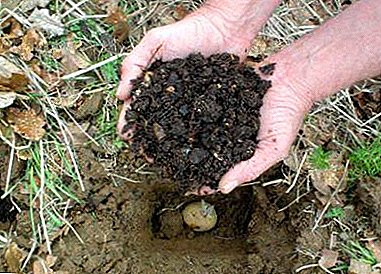 Proportions:
Proportions:
- chicken dung or manure (2 parts);
- water (30 parts).
Organics poured water insist two days. Watering such a solution of a plant under the root is needed only on wet soil. For each bush use 0.7-1 liter of solution.
When the buds are formed on the bushes, you can re-feeding. A good fertilizer will be a mixture of potassium sulphate ash (4 spoons of wood ash and 1.5 teaspoons of sulphate). This mixture is scattered on one meter running.
Fertilizers will work great if you put them in the hole when planting potatoes. Experienced gardeners are confident that during the growing season it is useless to feed the bushes: nutrients will not be absorbed in sufficient quantities.
During the flowering period, 1.5 tablespoons of superphosphate are scattered per meter of running. Each fertilizer application is made after rain or watering the plant.
The fact that it is better to fertilize potatoes when planting in the hole and after that, you can find out here.
Potatoes plentifully draws all useful elements from the ground. It is necessary to replenish the reserves of land with the help of fertilizers. Observing the rules of feeding potatoes and enriching your site with minerals, you can enjoy yourself with excellent crops and numerous potato dishes.


